Unbundling LegalTech for Disputes: A Q&A with BundleCorp’s Founder, Zaakira Allana
What prompted you to develop BundleCorp? What was the key inefficiency or market gap that made existing e-bundling tools insufficient?
Short answer: I needed a tool to make my job easier! As a commercial disputes lawyer, bundling is my least favourite part of the job, as it is for many of us. Arbitration bundles, especially, can be complex and include documents and evidence from supportive litigation as well as the arbitral proceedings.
Before we started developing our software, our team spent a lot of time researching tools on the market and speaking to our target users. We found that we were all looking for the same thing:
A comprehensive software solution designed specifically for the litigation/arbitration process. Lawyers are creating indexes in Excel, formatting them in Word, converting them to PDF in Adobe and sharing the bundles via Dropbox. We designed Bundlecorp to eliminate this jigsaw of workarounds and provide an end-to-end, efficient solution for bundling.
Reducing time and cost. Your readers will know how often bundling exceeds budget. It is a manually intensive task that requires time, effort and precision. We designed Bundlecorp to automate the most laborious tasks: organising, indexing and cross-referencing documents in the bundle. Work that used to require teams of paralegals now only needs one fee-earner on a laptop.
A functional and dynamic bundle. Bundles are valuable work products that need to balance the integrity of existing content and the need to add to that content. One of the reasons why teams are finding it difficult to move away from physical bundles is that the current industry standard on e-bundles simply does not allow for bundles to grow whilst retaining the existing formatting, notes, etc. The result is either a number of supplementary bundles in addition to the main bundle; or a single bundle that needs republishing every time it changes, making it impossible to work on. BundleCorp is disrupting that industry standard by allowing teams to supplement bundles post-publication as needed, without the need to recreate or republish the entire bundle.
You say BundleCorp is changing the way disputes lawyers work. Can you explain how, and how these changes will impact resourcing and budgeting for firms?
Absolutely. Our own experience and market research suggest that whilst most aspects of our work have modernised, we are still approaching the trial bundle the way we were 10 years ago. It is incredibly inefficient to set aside two weeks of time to ‘create the bundle,’ at a time when the entire team’s focus should be on substantive trial preparation, not what is essentially a document management task.
We designed BundleCorp not just for trial bundles, but for creating and collating documents right from the outset of a case. We encouraged testers to use the software for working bundles throughout the duration of a dispute. By incorporating our users’ feedback, BundleCorp facilitates a complete change in case management. The bundle is hosted on BundleCorp’s platform as a working bundle for the team. With a single click, the working bundle is reorganised and formatted into a hearing-compliant bundle when needed. The team is free to focus on substantive legal work as opposed to document management.
This has a significant impact on budgeting and resourcing; not just in the trial preparation stage but at every point in the litigation or arbitration where the team needs to build documents into briefings, exhibits, etc. With BundleCorp’s industry-leading PDF library, our software also allows teams to collaborate on a single digital bundle, from the start of a matter right through to trial.
How do you prioritize innovation in a sector that is often risk-averse? Have you had to navigate resistance to change within traditional firms?
Great question. Innovation in law has been such a talking point over the last few years. Since the advent of generative AI, especially, it has been all change. As a start-up in legaltech we have seen this impact in the way that firms are sourcing software, the buying criteria, etc.
Almost universally, firms are encouraging the adoption of legaltech. However, a report by Thomson Reuters earlier this year found significant gaps between the adoption of generative AI technology in law firms, and its implementation This supports our own anecdotal experience: innovation teams are often focussed on groundbreaking tech which is overhauling broad areas of management and practice – and this is commendable. Still, teams on the ground are looking for more niche but critical solutions to very real problems that exhaust resources and client budgets. The two are not always aligned, and that is the challenge the legaltech community is currently navigating. It would be great to see fee-earners of all levels be more involved in the buying process; that would go some way to bridging the gap between adoption and implementation.
What kind of return on investment (ROI) can a law firm expect from using BundleCorp, beyond cost or time savings?
The time and cost savings are significant, of course. Taking it further, adopting comprehensive solutions like BundleCorp provides firms with an edge in a challenging market. BundleCorp allows firms to streamline budgets and offer more competitive pricing to clients, who are increasingly savvy about how technology should be used to reduce their bills. For clients who want complete transparency over costs, BundleCorp offers a disbursable pricing model in which the cost of the bundle is charged directly to the client.
Clients are also increasingly insistent on firms that share their ESG values. In addition to our profession needing to reduce its carbon footprint (detailed in your July newsletter), technology that demonstrates firms’ genuine commitment to greener working will give firms a competitive advantage.
One of Bundleorp’s most positive outcomes of testing, from the clickable prototype to date, is more nuanced but incredibly important: improved job satisfaction for junior fee-earners. BundleCorp is designed to have as many bundle administrators as you need, but the work can be done by one fee-earner logging onto the platform. That means that teams of junior lawyers who otherwise may have had to spend days and weeks compiling bundles are spending more time reading the bundles, developing and using their skills to assist senior team members and ultimately adding value to their employers and clients. Receiving feedback from junior lawyers using BundleCorp is one of our favourite Key Performance Indicators (KPIs).
How do you guide law firms through onboarding and training?
When firms onboard with BundleCorp, they are assigned a dedicated Client Manager. That person is responsible for whatever the firm requires in terms of training, troubleshooting, and support. This is an integral part of our customer service, to ensure that firms that may need urgent assistance always have someone to hand.
We have video tutorials available on every aspect of our software, and we have tested our User Experience (UX) extensively to ensure that it is as intuitive and user-friendly as it can be.
We offer in-person training with staff, as well as virtual sessions, if this is preferred. We encourage training to take place with live bundles, so firms can derive as much value from the training as possible, but we have several ‘test’ bundles that we use for training if necessary.
BundleCorp’s development team is UK-based, but we offer a standard 60-minute response time regardless of where our customers are in the world. Your Client Manager will be on the phone or connect with you over Zoom, within (and often under) 60 minutes of you requesting assistance. We do everything we can to ensure that firms’ experience with BundleCorp is as seamless and integrated as possible.
For more information on BundleCorp, check out their Startup Spotlight page or visit their website or contact us link.

